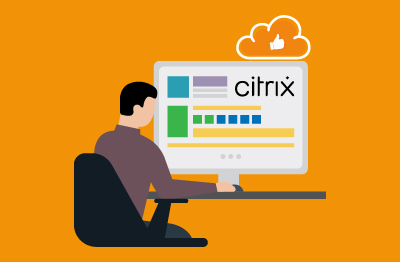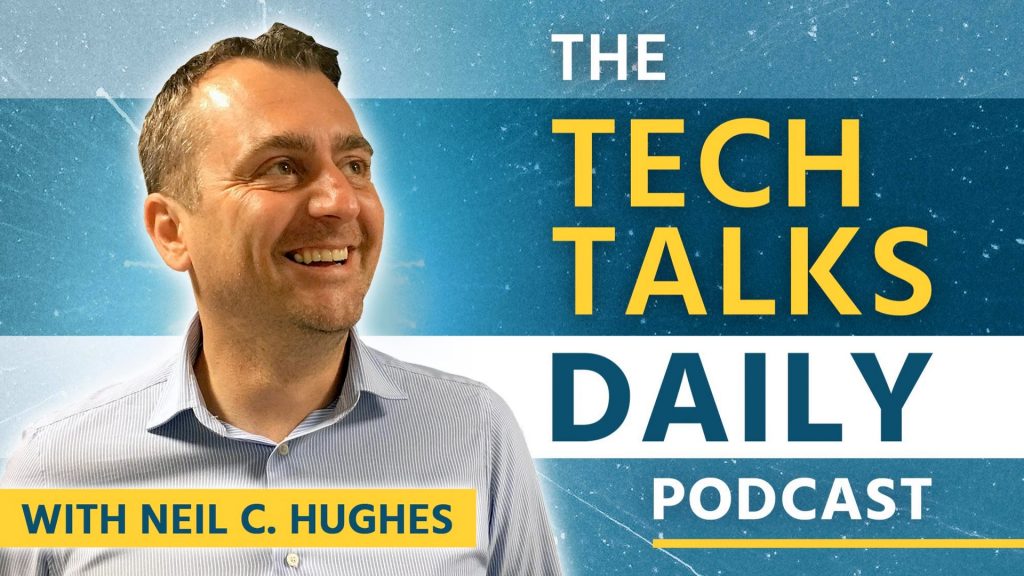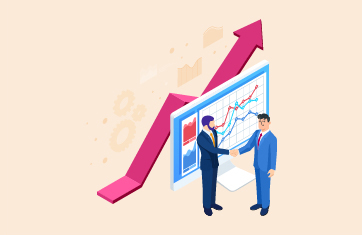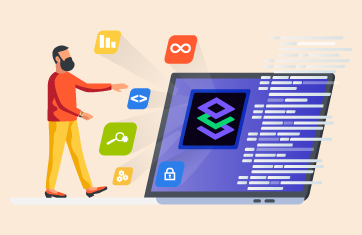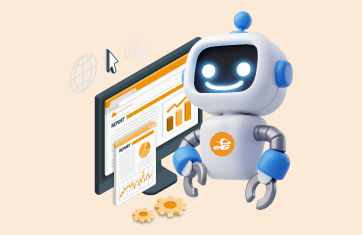Role of eG Enterprise in the Citrix User Experience
Many of the world’s largest businesses use eG Innovations’ solutions to enhance IT service performance, increase operational efficiency, ensure IT effectiveness, and deliver on the ROI promise of transformational IT investments across physical, virtual, and cloud environments. But what role will it play in the future of work (one where work from home is commmon)? And how are Citrix and eG working together?
Listen to this light-hearted conversation between Barry Schiffer, Pre-Sales Consultant – Benelux, eG Innovations and Ed Duncan, Technical Marketing Engineer, Citrix with interviewer, Neil C. Hughes, Tech Columnist.
The full transcript of the podcast appears below.
Pandemic’s Strain on IT
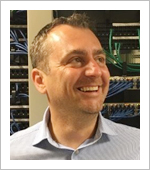
Neil: Companies told their employees to work from home during the pandemic, which is great for stopping the spread of the virus. Can you tell me about the strain that it is actually placing on the IT infrastructure? Because that’s something we don’t get to hear about much.

Barry: The impact of 100% of the workforce working remotely was huge even on companies that had solutions in place for WFH. No organization had 100% remote workforce. It wasn’t just IT that was impacted, it was simple things like sourcing ergonomically safe furniture or getting the right monitors for employees. This added a lot of facilitation and logistics work for not only IT admins but also for facility admins!
Looking at the technical side of things… High-speed internet connections for homes, WiFisolutions, and Citrix solutions – which had not taken 100% remote access into account – were all challenges. IT admins were concerned about which reports they needed to look into which would help them scale up to ensure that user experience levels were as good as working from the office. eG Innovations helped all customers and prospects with advice and roadmaps for the new normal.
Neil: Ed, at Citrix how did you view the work from home experience? Can you tell a bit more about the relationship you had with eG Innovations?

Ed: Even before Covid-19 hit, we saw companies making plans to shift portions of their infrastructure to the cloud. This helped people to work out of home, hotels, airports, or anywhere that’s convenient for them. For many of us, work is no longer a place you go to… it’s not something that’s tied to a particular location or office. You just need an internet connection and you can work from anywhere. At Citrix, we focus on providing solutions to improve that experience so that people can work from anywhere.
The relationship with eG Innovations is an important part of providing that great user experience by enabling us to monitor the health of the infrastructure. We’re looking for any type of degradation, interruption in service, or any negative impacts on the end user’s productivity. Especially now, with so many organizations having employees WFH, it’s important for organizations to have solutions like eG Enterprise so that they can proactively monitor and fix issues so that end users can work from anywhere without any niggles.
– Global Workplace Analytics
Citrix Monitoring Tools & eG Enterprise Complement Each Other
Neil: For anyone, who is already deep into the Citrix ecosystem, the important question is what does eG offer that Citrix Analytics doesn’t offer at the moment?
Barry: Obviously, Citrix is doing a great job with Citrix Director and Citrix Analytics in monitoring the Citrix Workspace environment. Where we come in is we monitor the entire environment including non-Citrix infrastructure components, web applications, Windows applications, etc.
Ed: I agree with what Barry has said. Both Citrix Director, Analytics and eG Innovations should be seen as complementary to each other. Although eG Enterprise and Citrix Analytics are both monitoring solutions, they should be looked at differently. For example, Citrix Analytics will look for and monitor any unusual behavior from the end-user. If the user is suddenly performing some actions which are not the norm, then Citrix Analytics will automatically alert the administrator who can take some action and potentially protect the company.
eG Enterprise, on the other hand, does a more comprehensive job of monitoring not only the Citrix environment but the entire network ecosystem… All the way from the hardware in the data center to the applications being used by the end-users on their workstations. So, if you want an analysis of what’s going on anywhere along that path, that’s something eG Enterprise can do very well.
Barry: That’s what we’ve seen with customers, too. Aside from just monitoring what happens on the system, we also add simulated user transactions. In this case we have simulations running that are testing your Citrix environment the entire day. We then take all that data we have from the Citrix monitoring tools and eG Enterprise and we analyze it and provide it to our customers as multiple reports.
In the case of our customers who were looking to have their employees work from home, we were able to tell them that if you want to add a 100 or 1000 WFH users to your Citrix environment, this is the amount of hardware you will need to scale up and make sure that the user experience is still within acceptable levels.
Neil: Barry, do you have any use cases you could share to best understand how eG Enterprise monitors Citrix environments?
Barry: Citrix has always been more than just a partner to eG. A lot of our customers use Citrix built-in
monitoring tools along with eG Enterprise. What we see is the way we’re able to monitor Citrix environments, we also monitor Microsoft applications, web applications… So, we’re able to digitalize and in tangible ways show the administrator what is the performance like for the end-user for both the Citrix environment and the applications running on Citrix.
This works wonders for them as they’re finally able to see whether any performance impact is caused by the Citrix environment, or any other inter-dependency, or is it the application itself, which is slow. So, we try to answer that fundamental question: why is my application slow? We do this with end-to-end monitoring.
Neil: From the Citrix standpoint, how do you think Citrix and eG complement each other? From my POV, there seems to be a natural fit. What’s your point of view?
Ed: As I mentioned before, to get an end-to-end picture of how the infrastructure is performing, you’ve got to use more than one tool to properly cover all aspects of the environment along with the Citrix’s own performance monitoring tools. eG Enterprise has those capabilities wherein it can monitor other aspects of the environment that the Citrix and non-Citrix components rely on.
For example, when I start my workday, I like to quickly glance at the eG Enterprise dashboard to get an overall view of the health of the entire IT environment. I look at all the alerts and warnings it shows. If there are any Citrix related warnings or alerts, I look at Citrix Analytics to confirm what eG Enterprise is detecting and reporting. Then, I take further action to communicate those issues.
To me, having multiple monitoring tools has shortened the time I take to troubleshoot those issues.
The WFH Debate
Neil: There have been so many changes in attitude this year… The arrival of Covid-19 has almost acted as an accelerant and if we look at just 9 months ago, people had a very different opinion about WFH. We had debates about WFH and working from office. I think the best approach to this debate is a scenario where you can work from anywhere depending on the tasks at hand. What are your views on WFH?
Barry: Obviously, WFH or remote has become far more important than any of us thought. Before, if you had a complaint or an issue while WFH, your boss would say go to the office and it’ll be fixed. But now, we’ve moved on from that mindset that the office is the main workplace. I think even after Covid-19, most people will be WFH more and more. I think the attitude from the management and the CIOs will be interesting to see because how we look at user performance and user experience and the impact of technology on user productivity will be a lot more important in the future.
The impact of technology on user productivity will be prioritized in the future. This is where we come in as eG Enterprise so that people can actually see how IT services perform!
Ed: What my team does, in terms of Citrix technical marketing, is that we simulate an environment that closely aligns with the way most of our customers have set up their environment. We incorporate many of the Citrix solutions in our ecosystem. When we demo them, we’re able to show our customers how their employees will experience IT services and applications when they’re working from home. For Citrix, it’s about making that experience as easy as possible to the end-user and at the same time, make it secure and manageable for their IT admins. When our customers can see both you know… like how the end-users are productive and the security and accessibility is fine, it gives them more confidence to go out and implement their own WFH policies and processes.
Monitoring is an important part of this WFH policy and process. As an IT admin, I don’t want my end users calling me and letting me know about performance issues even before I know about them. This is where our partnership with eG Innovations comes in. eG Enterprise is like another member of the IT team constantly checking and making sure that everything is running well. If problems are detected, we’re able to inform our users and work on resolving those issues so that it doesn’t impact their ability to be productive.
The Future of the IT Landscape
Neil: What does the future look like in the working landscape in your opinion? What role do you think eG will play in that future?
 Barry: My expectation is that we’ll see more WFH scenarios. The office will become more of a meeting place, a place to brainstorm and strategize with your colleagues across different teams. There will also be a better work-life balance. Covid19 accelerated the work-life balance discussion, which previously used to be only in the HR corridors! I think going forward, companies will have 50 percent working from home and the rest working out of office and other places.
Barry: My expectation is that we’ll see more WFH scenarios. The office will become more of a meeting place, a place to brainstorm and strategize with your colleagues across different teams. There will also be a better work-life balance. Covid19 accelerated the work-life balance discussion, which previously used to be only in the HR corridors! I think going forward, companies will have 50 percent working from home and the rest working out of office and other places.
eG Enterprise is geared for this future. It will constantly monitor real users and also simulate real user transactions. IT admins will get an idea of how the actual user experience is and can also know this from a geographical location point of view as well. IT admins will know whether users from a specific office location or a particular region are affected or is only users who’re working from home who’re affected by any performance issues.
eG delivers a constant overview of real user experience across any applications: apps running from the desktop or applications on the cloud.
– Gartner
Neil: Ed, what role will Citrix play in the new future of work as we move ahead?
 Ed: This is a great question as we recently conducted research on this topic, and we released a document Work 2035 on our findings. I encourage you all to download and read it as it has some wonderful insights.
Ed: This is a great question as we recently conducted research on this topic, and we released a document Work 2035 on our findings. I encourage you all to download and read it as it has some wonderful insights.
Work from home, in my opinion, is here to stay even after we all move past this pandemic. We’ll see more collaboration and communication tools in use, which will have AI systems incorporated. AI will take over the mundane tasks and allow us to focus on the more meaningful tasks in the near future.
Citrix will play a role in this by integrating AI technology more into our solutions. So, when you start Citrix Workspaces, for example, an AI system will be smart enough to deliver all the content and tasks that need to be done which are most relevant to your job and remove the clutter and noise for you.
Neil: Barry, are you currently working on any projects with Citrix or by yourself that excites you?
Barry: We’re working on new releases within eG to offer better solutions and newer solutions too. Newer functionalities too. We look closely at Citrix too, at their evolution and roadmap. So, when their products have new releases or features, we’re ready for their customers too. ? Our aim is to enhance monitoring continuously for our customers along with the evolution of our partner’s products and upgrades.
Neil: Ed, as we’re getting into 2021, is there anything that you’re excited about?
Ed: Yes, there’s one project that we’re doing together with eG. We got different demo centers located throughout multiple offices across the world. So, each demo center works independently from one another till now; what we’re working on is bringing all those offices into one big demo infrastructure.
In 2020, we started with our offices in California and Florida but in 2021, we’ll be expanding it to our offices in the UK, France, Germany, and India. Our team briefings and all tasks have been virtual and from home. This expansion will give us a fully global demo environment.
We’ve been using eG Enterprise as part of this expansion process to monitor all the moving parts. As our expansion continues, it’ll be even more important for us to proactively stay on top of how the infrastructure is running.
Till now, our teams have been able to give demos and walkthroughs without any problems, thanks to eG.
Neil: Well, thanks for this short talk and your time. This year, we’ve seen the breakneck speed at which IT and technology has had to evolve but what we don’t realize or see is the strain that it has put on the IT infrastructure and IT teams.
In this context, it’s interesting to see how Citrix and eG Innovations work in a complementary fashion to bring the best of their capabilities to enable you to work from anywhere.
Visit https://www.citrix.com/ and https://www.eginnovations.com/ for more information.
Sources
eG Enterprise is an Observability solution for Modern IT. Monitor digital workspaces,
web applications, SaaS services, cloud and containers from a single pane of glass.
- This blog is a written version of the original podcast on LibSyn and YouTube. ?
- Source for all the stats: https://review42.com/resources/remote-work-statistics/


